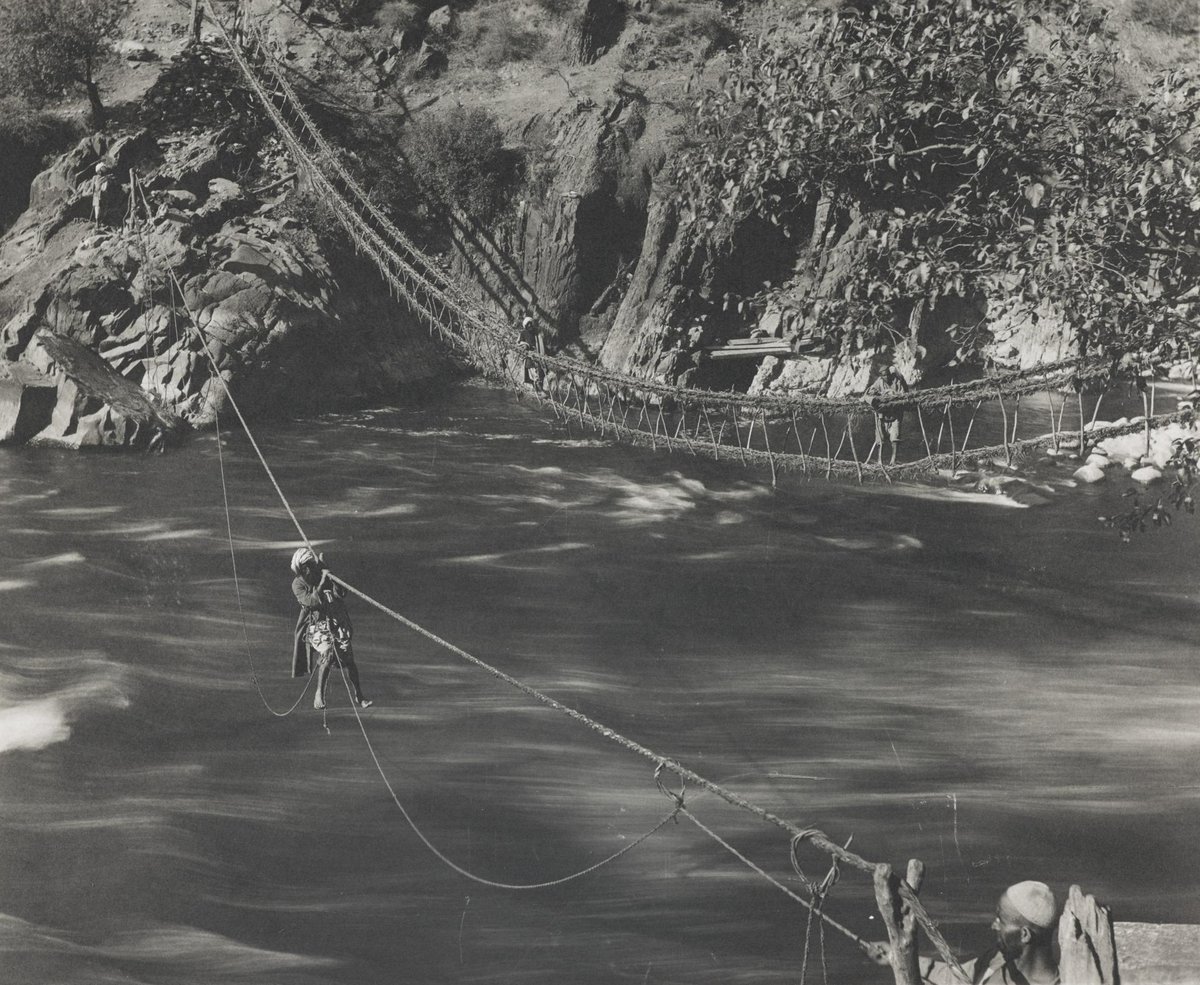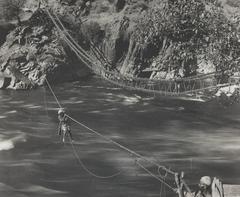
Complete Guide to Visiting Suspension Bridge Baramula, Baramulla, India
Date: 01/08/2024
Introduction
Baramulla, a city steeped in rich history and cultural diversity, is a gateway to the picturesque Kashmir Valley. One of its most notable landmarks is the Suspension Bridge Baramula, an engineering marvel that not only connects the two banks of the Jhelum River but also serves as a symbol of unity and progress. Constructed in the early 20th century, the bridge has facilitated trade and communication, playing a crucial role in the region’s development. This comprehensive guide aims to provide visitors with essential information about the Suspension Bridge, including its historical and cultural significance, practical travel tips, and nearby attractions. Whether you are a history enthusiast, a nature lover, or a casual traveler, the Suspension Bridge in Baramula offers a unique and enriching experience (Baramulla History, Wikipedia, Tripoto).
Table of Contents
- Introduction
- History of Baramulla
- Architectural Significance
- Cultural Importance
- Economic Impact
- Visitor Information
- Future Developments
- Conclusion
- FAQs
- References
History of Baramulla
Ancient Origins and Mythological Significance
Baramulla, known in ancient times as Varāhamūla, derives its name from the Sanskrit words “Varaha” (boar) and “Mula” (root), meaning the place where the boar rooted. This ancient city has mythological significance, believed to have been founded by Raja Bhimsina in 2306 BC.
Historical Context
The city has been a crucial gateway to the Kashmir Valley and has seen visits from notable figures such as the Chinese traveler Xuanzang and Mughal emperors like Akbar and Jahangir (Baramulla History).
Architectural Significance
The Suspension Bridge is an engineering marvel that connects the old town on the north bank of the Jhelum River with the new town on the south bank. This bridge is one of the five bridges that span the Jhelum River in Baramula, facilitating the movement of people and goods between the two parts of the city (Wikipedia). The bridge’s design and construction reflect modern engineering techniques while maintaining the aesthetic harmony with the surrounding natural beauty.
Cultural Importance
Baramula has been a melting pot of various cultures and religions, including Hinduism, Buddhism, Islam, and Sikhism. The Suspension Bridge serves as a physical and symbolic link between these diverse communities. It connects areas like Gulnar Park and Dewan Bagh, which are frequented by locals and tourists alike for their cultural and recreational significance (Baramulla History).
Economic Impact
The Suspension Bridge plays a crucial role in the local economy by facilitating trade and commerce. It connects the bustling markets of the old town with the more modern commercial areas in the new town. This connectivity has led to economic growth and development, making Baramula a vital economic hub in the region. The bridge also supports local tourism, attracting visitors who contribute to the local economy by spending on accommodation, food, and other services (Tripoto).
Visitor Information
Best Time to Visit
The best time to visit the Suspension Bridge and Baramula, in general, is from April to October. During these months, the weather is pleasant, and the natural beauty of the region is at its peak. The summer months (April to June) are particularly favorable for sightseeing and outdoor activities (Tripoto).
How to Reach
Baramula is well-connected by road and rail. The nearest airport is in Srinagar, approximately 57 km away. From there, you can hire a taxi or take a bus to reach Baramula. The town is also connected by the Udhampur-Srinagar-Baramulla rail link, which has significantly improved accessibility (Rail Analysis India).
Local Attractions
While visiting the Suspension Bridge, tourists can also explore other attractions in Baramula, such as:
- Gulmarg: A popular hill station and ski resort located about 40 km from Baramula. It is known for its scenic views, cable car, and golf course (Tripoto).
- Wular Lake: One of the largest freshwater lakes in Asia, offering boating and bird-watching opportunities.
- Eco Park: Located near the old bridge, this park is ideal for picnics and adventure sports like zip-lining and rock climbing (Tripoto).
Safety and Accessibility
The Suspension Bridge is well-maintained and safe for pedestrians and light vehicles. However, it is advisable to avoid visiting during the monsoon season (July to September) due to heavy rainfall and slippery conditions. The bridge is accessible to people of all ages, but those with mobility issues should exercise caution, especially during peak tourist seasons when the bridge can get crowded (Tripoto).
Environmental Impact
The construction and maintenance of the Suspension Bridge have been carried out with a focus on minimizing environmental impact. The bridge’s design ensures that it blends seamlessly with the natural surroundings, preserving the scenic beauty of the Jhelum River and its banks. Efforts have been made to maintain the ecological balance, ensuring that the local flora and fauna are not adversely affected (Baramulla History).
Future Developments
Plans are underway to construct more bridges across the Jhelum River to further improve connectivity between the old and new towns of Baramula. These developments aim to decongest the existing infrastructure and provide better facilities for residents and tourists alike. The ongoing advancements in the Udhampur-Srinagar-Baramulla rail link project also promise to enhance accessibility and boost tourism in the region (Hindustan Times).
Conclusion
The Suspension Bridge in Baramula is more than just a piece of infrastructure; it is a symbol of the region’s rich history, cultural diversity, and economic vitality. Whether you are a history enthusiast, a nature lover, or a casual traveler, the bridge and its surrounding attractions offer a memorable experience. By understanding its significance and planning your visit accordingly, you can make the most of your trip to this beautiful part of Kashmir.
FAQs
Q: What are the visiting hours for the Suspension Bridge in Baramula?
A: The bridge is open to visitors 24/7, but it is best enjoyed during daylight hours for safety and scenic views.
Q: Is there any entry fee to visit the Suspension Bridge?
A: No, there is no entry fee to visit the bridge.
Q: Are guided tours available?
A: While there are no official guided tours, local guides can be hired for a more informative experience.
Q: What other historical sites can be visited in Baramula?
A: Apart from the Suspension Bridge, visitors can explore the old town’s historical sites, including ancient temples and Mughal-era structures.
